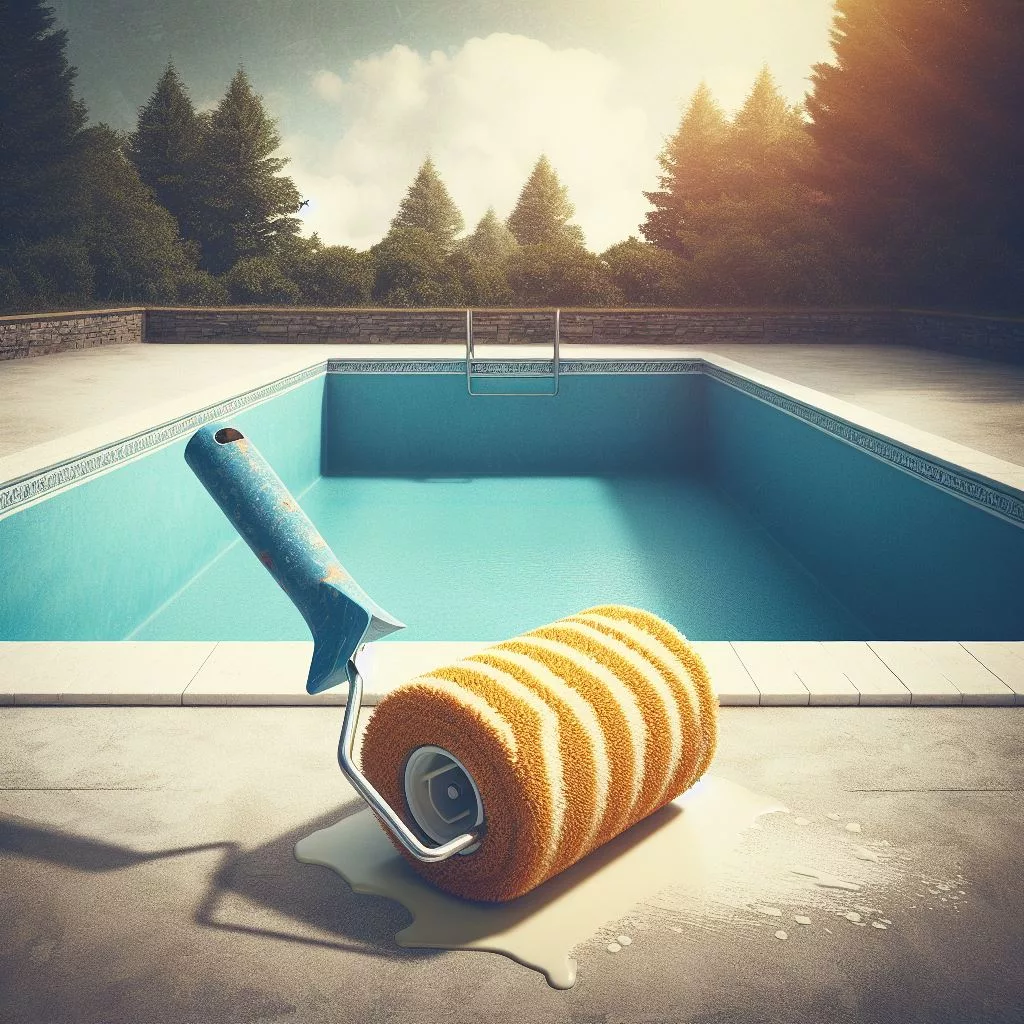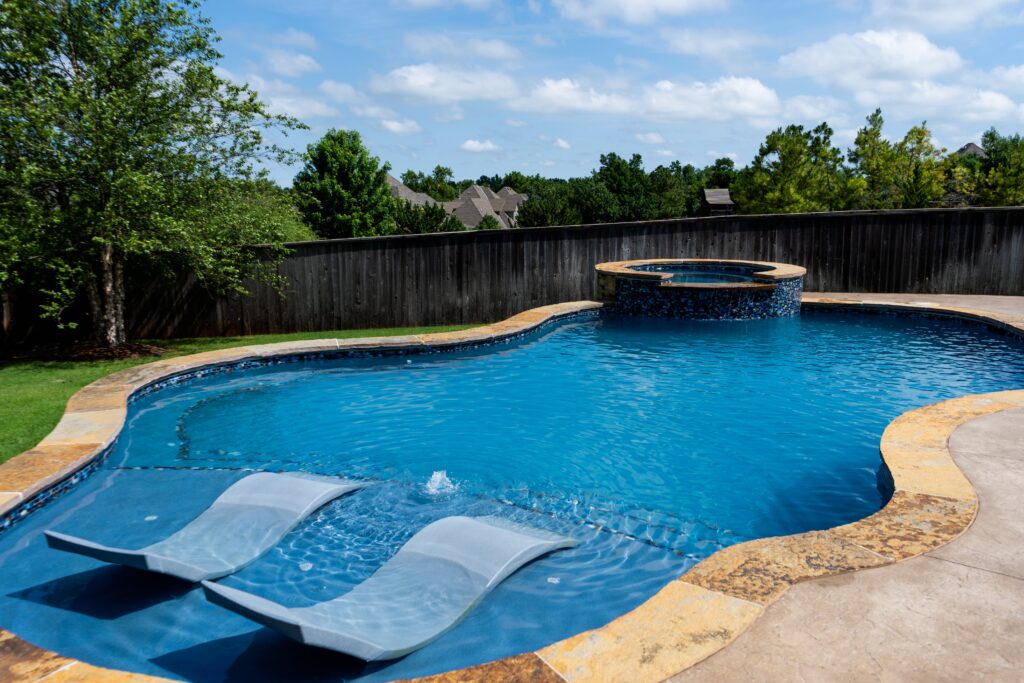How Long Does Epoxy Last in a Pool

Deciding on the best pool surface can be tricky. One popular choice is epoxy paint due to its durability in water. This article will explore how long epoxy lasts in a pool and offer tips for extending its life.
Factors Affecting the Lifespan of Epoxy Pool Paint
Different factors can influence how durable epoxy pool paint will be over time.

Climate
The climate has a significant impact on the lifespan of epoxy pool paint. Extreme temperatures, high humidity, and prolonged exposure to direct sunlight can accelerate the deterioration of the paint, leading to cracking, fading, or peeling.
Harsh weather conditions can also make the pool surface more susceptible to damage from elements like UV rays and heavy rainfall. Properly assessing the local climate is essential for selecting an epoxy paint that offers superior resistance to these environmental factors.
Amount of use the pool receives
The amount of use the pool receives affects the longevity of epoxy pool paint. Pools that experience heavy usage are more prone to wear and tear, which can shorten the lifespan of the paint coating.
Regular use, especially with high foot traffic or frequent swimming, can lead to quicker deterioration and may require more regular maintenance and touch-ups to keep the epoxy paint in optimal condition.
To maximize the durability of epoxy pool paint under heavy use, it’s important to monitor the condition of the coating regularly and address any signs of wear promptly. Proper care and timely repairs can help extend the lifespan of the paint despite heavy usage.
Type of surface the paint is applied to
The surface to which the paint is applied significantly impacts its durability. Whether it’s a concrete, plaster, or fiberglass pool, the compatibility of the epoxy paint with the pool’s surface influences how well it adheres and withstands wear and tear.
The type of surface also affects how resistant the paint is to chemicals and fading from UV exposure. Properly preparing the pool’s surface before applying epoxy paint is crucial for maximizing its lifespan and ensuring long-term protection against water, chemicals, and other environmental factors.
How Long Does Epoxy Pool Paint Typically Last?
Average lifespan
The average lifespan of epoxy pool paint is around 5-10 years. However, this can vary depending on factors such as the type of paint used, climate, frequency of use, and the surface it’s applied to.
Harsh climates and heavy pool usage can reduce the lifespan, while proper maintenance and regular touch-ups can help extend it. Additionally, using high-quality epoxy paints designed for underwater use and providing effective surface preparation before application can contribute to a longer-lasting finish.
Looking at ways to maximize the durability of epoxy pool paint will help ensure that your investment lasts longer. Signs of deterioration should be addressed promptly with targeted repairs or touch-ups.
Maximizing the Lifespan of Epoxy Pool Paint
To maximize the lifespan of epoxy pool paint, it’s essential to be proactive in identifying signs of deterioration and promptly addressing them. Repairs and touch-ups can help maintain the integrity of the coating, while considering alternative pool coating options may also prove beneficial.
Signs of deterioration
- Cracking or Peeling: The appearance of cracks or peeling on the epoxy paint surface can indicate deterioration.
- Fading or Chalking: If the pool paint begins to fade or develop a powdery residue, it might be deteriorating.
- Bubbling or Blistering: The presence of bubbles or blisters on the epoxy paint surface suggests that it is deteriorating.
- Rough Texture: A rough texture on the painted surface can be a sign of deterioration and may indicate the need for repairs or touch-ups.
- Staining or Discoloration: Any staining or discoloration on the pool paint could signal deterioration and may require attention to maintain the coating’s longevity.
- Reduced Chlorine Resistance: A decrease in chlorine resistance can be an indicator of deteriorating epoxy pool paint, potentially affecting its long-term durability.
- Loss of Glossiness: The loss of glossiness in the epoxy pool paint can be a visible sign that it is deteriorating and may need maintenance to prolong its lifespan.
Repairs and touch-ups
To maintain the longevity of epoxy pool paint, regular inspections for signs of deterioration are essential. When addressing any issues, repairs and touch-ups can help extend the lifespan of the coating. Here’s how to effectively manage these maintenance tasks:
- Clean the affected area thoroughly using a scrub brush and water to remove any dirt or debris.
- Sand down the damaged section to create a smooth surface for the new paint to adhere to.
- Apply an epoxy primer to the sanded area before adding a fresh coat of epoxy pool paint.
- Ensure that each layer is allowed to dry completely according to the manufacturer’s instructions before applying subsequent coats.
- Be diligent in addressing small areas of damage promptly to prevent further deterioration and potential widespread issues.
- Regularly inspect the pool surface for signs of wear and tear, taking note of any areas that may require attention.
- Keep records of all touch-ups and repairs conducted on the pool surface, including dates and specific actions taken, for future reference in maintenance planning.
Alternative pool coating options
When considering alternative pool coating options, there are several choices to consider.
Fiberglass and vinyl liners offer low-maintenance alternatives to epoxy paint.
Additionally, plaster and pebble finishes can provide a more natural aesthetic while also offering long-lasting protection for your pool surface.
Another great option is an ecoFINISH coating, which possesses exceptional durability.

Conclusion
To make epoxy pool paint last longer, vigilant monitoring for signs of deterioration is crucial. Prompt repairs and touch-ups can help maintain the integrity of the coating. Exploring alternative pool coating options may also be beneficial in extending the lifespan of your pool’s surface protection.
